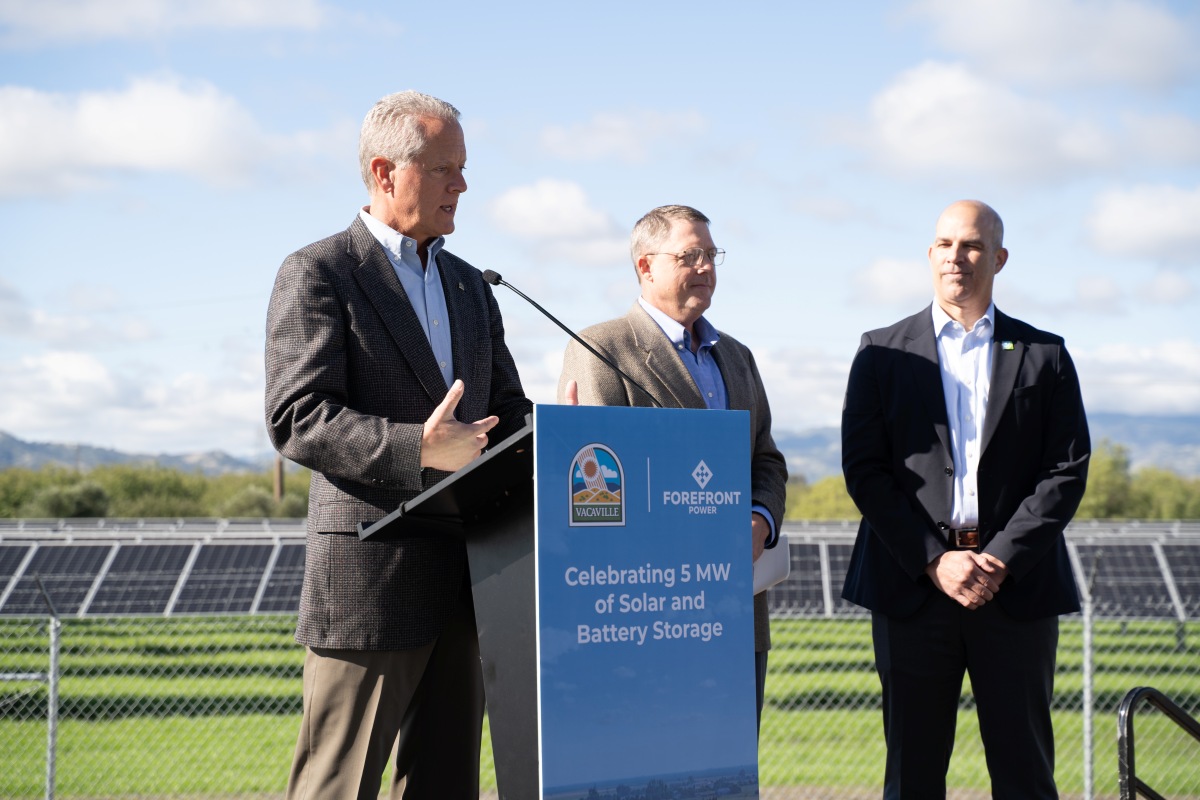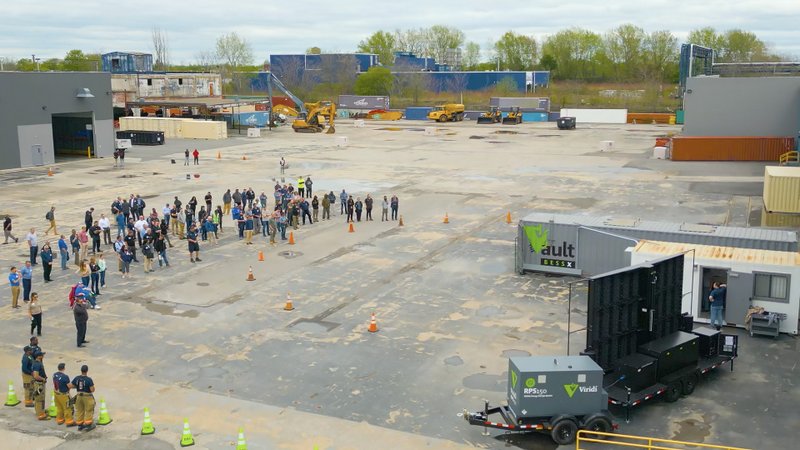Battery-less storage solutions for large-scale solar and storage

View of the Energy Vault crane tower in Switzerland. Energy Vault is a company specializing in gravity and kinetic energy based, long-duration energy storage.
Shakespeare spoke of, “Vaulting ambition which o’er leaps itself and falls upon the other.” He could have meant lithium-ion batteries. They are everywhere, setting fire to power stations, cars and hoverboards, and that was just January 2021. Analysts IDTechEx wrote an article, “Lithium-ion Batteries: 2021 Starts with a Bang (or Two)” recording the deaths.
Battery-less solutions are a new megatrend. They are well progressed at the small end such as heart pacemakers. For some reason, people do not like being chopped open to change their battery. But what of the large end?
Solar power is dropping in cost faster than anything else, so it is gaining share of both grid and microgrid installations. This brings two headaches – dead at night, feeble in winter. This is why the Biden Administration wants to place a big emphasis on long-duration storage. Lithium-ion batteries are the favorite for compensating for this over the coming decade but only for up to a few hours between peak sunshine and peak demand. They self-leak, so longer duration of storage (e.g. no wind for my wind turbines) is inefficient and they are hopelessly incontinent for seasonal storage.
IDTechEx has newly examined the conundrum in reports on battery-less stationary storage and redox flow batteries. It finds that lithium-ion batteries are also in trouble for very large GWh level storage. They add cost issues for toxin recycling, fire suppression, and the fact that you cannot repair them. Consequently, redox flow batteries will grab a share of the several-hours-storage slice of the market such as solar dead at night. Increasingly these will make cheaper real-world electricity in certain duty cycles.
Battery-less solutions are also greener and more economical in an increasing number of cases. They are starting to compete right up to six-month storage with no leakage at all, GWh levels of storage, GW levels of power out, you name it. Redox flow and several of these battery-less solutions have the additional virtue called no-fade. Lithium-ion batteries wear out. You get less battery as time goes on, not just when cold or used a lot.
Your ancestors had a grandfather clock in the hall. They powered it by lifting the weight on a string once a week. Reinvented, companies now develop “gravity energy storage” consisting of building a huge tower of scrap concrete blocks and dismantling it to make electricity when needed, even six months later. Variants include lifting and dropping massive weights in disused mineshafts and specially-made huge holes in the ground. Call it piston energy storage, the great new invention. Do not mention grandfather.
The familiar pumped energy storage up mountains is running out of sites. Existing versions could store seasonally but they are busy doing shorter-term tasks. Rivers are running dry. For example, the huge dam on the drying-up Colorado river will bring new meaning to the accounting term “stranded asset”.
So what to do? There are developments of heavy water pumping because then you only need a hill and there are lots of hills out there. No, we do not mean radioactive water: we mean dense liquid, even water full of gravel. Another option is compressed air in underground caverns if you can find some.
Raghu Das, CEO of IDTechEx advises, “Gravity storage looks very good for seasonal storage. Those others can have leakage and other issues but there are yet more options. They will take different parts of the market according to size and storage duration. For example, making liquid air then using it to drive a turbine to make electricity is very clean and it uses proven technology – order books are growing but not for seasonal storage.”
The heating of volcanic rocks and making steam from them even days later actually makes sense and is ideal for repurposing old fossil-fuel power stations, reusing both the steam turbines and electricity transmission. The leading proponent trumpets, “The new stone age!”. It is therefore ironic that Sheik Yamani of OPEC earlier warned that oil demand will drop before oil runs out, using the words, “The stone age did not end for lack of stones.”
Energy storage on the grand scale does more than provide delayed electricity. This is a world of uninterruptible power supplies, frequency correction, voltage compensation. For pulse power, supercapacitors and their derivatives already provide many megawatts surge but not affordable MWh levels of storage. Some of the chronic intermittency of wind and solar will be offset by more continuous wave and tidal power in the open sea with no longer needing massive concrete.
Storage exotica now include the development of “underwater gravity energy storage”, gravity storage using railways up hills, and thermal energy storage using molten salts and back to electricity, including at those giant concentrated-solar generators. A growth sector is therefore the manufacture of acronyms and glossaries. Find them in the IDTechEx report, “Stationary Energy Storage Without Batteries: Grid, Microgrid, UPS, Trackside 2021-2041” and maybe even read the rest?
IDTechEx guides strategic business decisions through its Research, Subscription and Consultancy products covering emerging technologies. www.IDTechEx.com.





Comments are closed here.